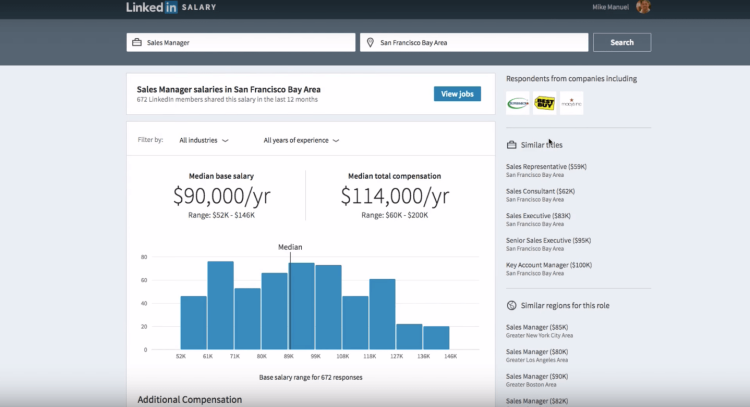Employees appreciate salary transparency — and data suggests a correlation between companies’ willingness to speak openly about their wage practices and the size of pay gaps among departments. A University of California Los Angeles study published in 2013 found that workers are more productive when salary is transparent, and researchers at the University of Massachusetts report that women with higher education levels who live in states that have outlawed pay secrecy tend to have higher earnings.
To that end, LinkedIn two years ago launched LinkedIn Salary, a feature that provides detailed compensation data by job title and location along with insights on top-paying companies and industries, and it more recently rolled out Salary Insights, which estimates salary ranges for open roles. Building on those earlier efforts, LinkedIn says it has now expanded the availability of LinkedIn Salary to more than 10 countries around the world. Today, it’s introducing new insights about high-paying available jobs in the U.S., U.K., and Canada.
“If the salary potential is your guiding light, you’re not alone. In fact, research shows salary to be the top factor that motivates you in your career, and one of the first things you’re interested in learning about a role,” Erika Hairston, associated product manager at LinkedIn, wrote in a blog post. “We introduced LinkedIn Salary to provide you with a reliable source of up-to-date information about the factors that impact the way you’re paid, increasing transparency and helping you to have more informed conversations.”
LinkedIn’s new U.S., U.K., and Canada insight — dubbed “Jobs Where You Could Make More Money” — is part of the “search by salary” feature in LinkedIn. It’ll start to appear on jobs throughout the search process once you’ve submitted your salary where there’s potential for a pay raise. A LinkedIn user searching for a software engineering role, for instance, might see “site reliability engineer” (which pays about $200,000 on average, according to LinkedIn), “cloud architect” ($155,000), and “data scientist” ($130,000).
June 5th: The AI Audit in NYC
Join us next week in NYC to engage with top executive leaders, delving into strategies for auditing AI models to ensure fairness, optimal performance, and ethical compliance across diverse organizations. Secure your attendance for this exclusive invite-only event.
According to Hairston, the idea is to arm job seekers with the knowledge they need to find the right fit — and to negotiate fair compensation. “Finding the job that’s right for you is the most important part of your career journey,” she wrote. “Part of being transparent is advocating for your capabilities as part of the reasoning behind why you’re asking for the salary you want.”
LinkedIn Salary’s expansion and the new insights come a month after the company previewed its forthcoming Intelligent Hiring Experience, a dashboard that collates its existing hiring suite — comprising LinkedIn Recruiter, LinkedIn Jobs, and Pipeline Builder — in a streamlined, built-from-the-ground-up interface. It’s expected to launch late this summer with over 15 product enhancements in tow, including Recommended Candidates, which learns a role’s hiring criteria and automatically surfaces relevant candidates, and Shared InMails, which enables recruiting team members to view candidate correspondences and add notes, annotations, and coworker mentions.
Today’s news also follows the launch of LinkedIn’s new applicant tracking system, Talent Hub, and an updated Recruiter platform and skills insights in LinkedIn Learning. In early 2018, LinkedIn rolled out a feature that shows prospective job candidates what their commute time for a specific role would be before they apply, and a tool that enables job seekers to request referrals from someone they know at a company before they send in their resume.

